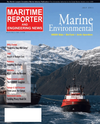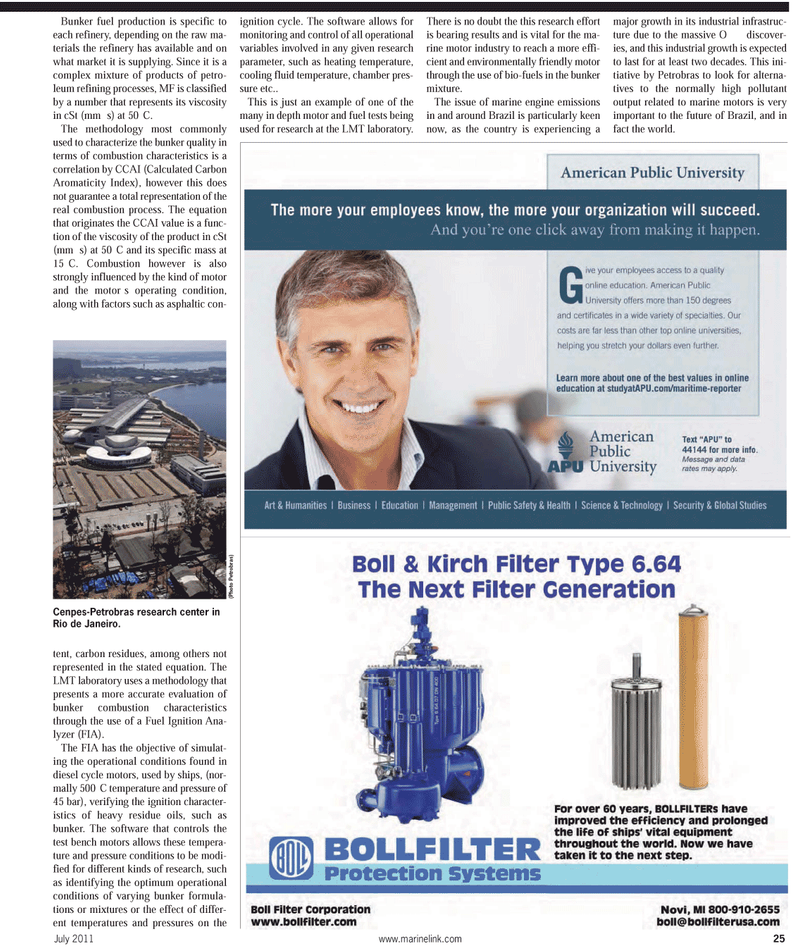
Page 25: of Maritime Reporter Magazine (July 2011)
The Green Ship Edition
Read this page in Pdf, Flash or Html5 edition of July 2011 Maritime Reporter Magazine
July 2011www.marinelink.com 25Bunker fuel production is specific to each refinery, depending on the raw ma- terials the refinery has available and on what market it is supplying. Since it is a complex mixture of products of petro- leum refining processes, MF is classified by a number that represents its viscosityin cSt (mms) at 50C. The methodology most commonlyused to characterize the bunker quality in terms of combustion characteristics is a correlation by CCAI (Calculated CarbonAromaticity Index), however this does not guarantee a total representation of thereal combustion process. The equation that originates the CCAI value is a func- tion of the viscosity of the product in cSt(mms) at 50C and its specific mass at 15C. Combustion however is also strongly influenced by the kind of motorand the motors operating condition, along with factors such as asphaltic con- tent, carbon residues, among others notrepresented in the stated equation. The LMT laboratory uses a methodology thatpresents a more accurate evaluation of bunker combustion characteristics through the use of a Fuel Ignition Ana- lyzer (FIA).The FIA has the objective of simulat- ing the operational conditions found indiesel cycle motors, used by ships, (nor- mally 500C temperature and pressure of 45 bar), verifying the ignition character- istics of heavy residue oils, such as bunker. The software that controls the test bench motors allows these tempera- ture and pressure conditions to be modi-fied for different kinds of research, such as identifying the optimum operationalconditions of varying bunker formula- tions or mixtures or the effect of differ- ent temperatures and pressures on theignition cycle. The software allows for monitoring and control of all operationalvariables involved in any given research parameter, such as heating temperature, cooling fluid temperature, chamber pres-sure etc.. This is just an example of one of the many in depth motor and fuel tests being used for research at the LMT laboratory. There is no doubt the this research effort is bearing results and is vital for the ma-rine motor industry to reach a more effi- cient and environmentally friendly motor through the use of bio-fuels in the bunker mixture.The issue of marine engine emissionsin and around Brazil is particularly keen now, as the country is experiencing a major growth in its industrial infrastruc- ture due to the massive O discover- ies, and this industrial growth is expected to last for at least two decades. This ini- tiative by Petrobras to look for alterna- tives to the normally high pollutant output related to marine motors is very important to the future of Brazil, and infact the world. Cenpes-Petrobras research center in Rio de Janeiro. (Photo Petrobras)

 24
24

 26
26
